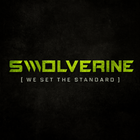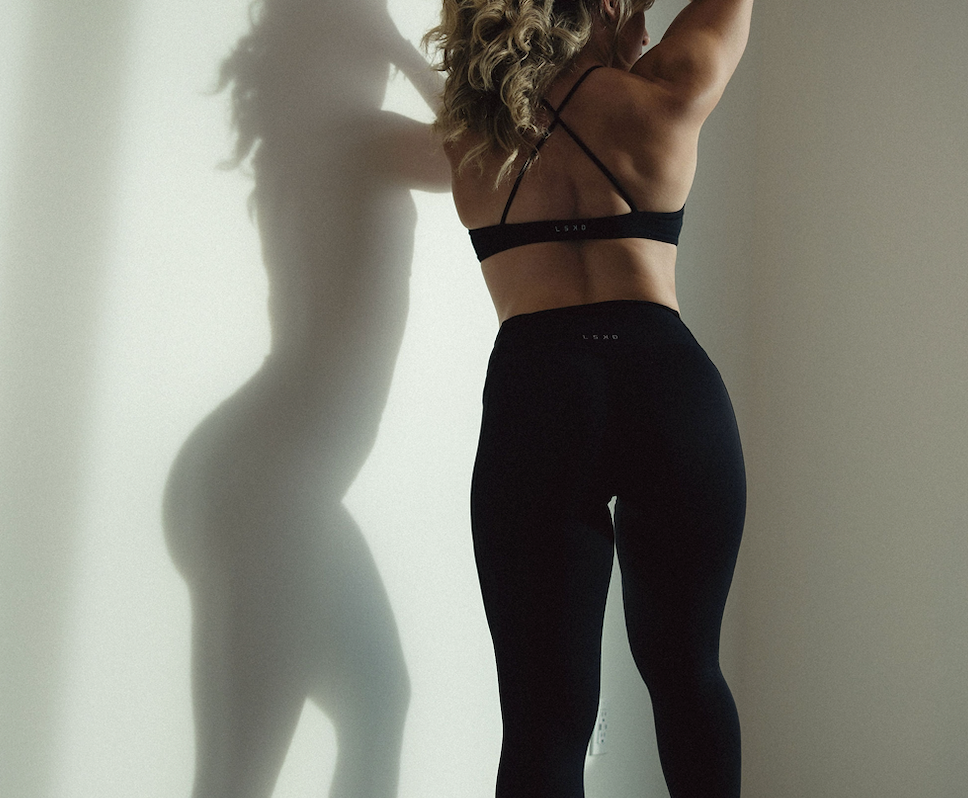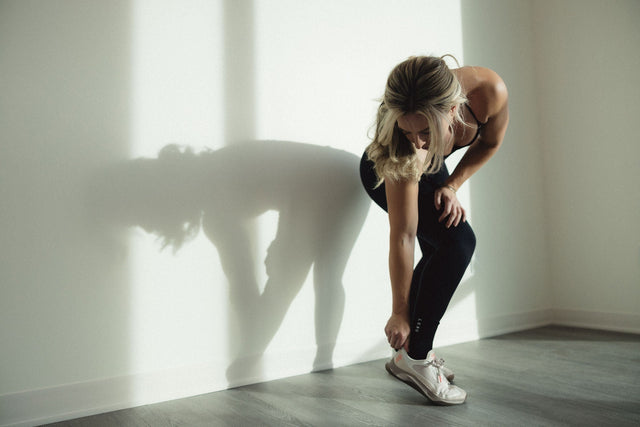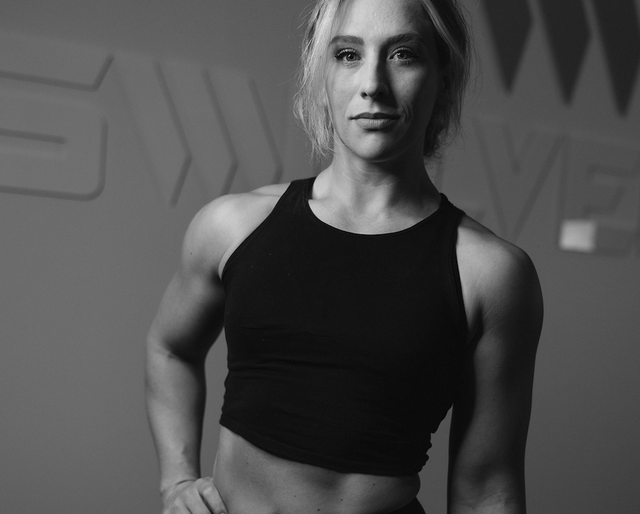When it comes to sculpting impressive calf muscles, the debate between standing and seated calf raises can leave even seasoned gym-goers scratching their heads. Each exercise boasts its own unique benefits, targeting different muscle fibers and catering to varying fitness preferences. But if your goal is to build muscle faster, which method holds the upper hand?
In this article, we'll dive deep into the mechanics of both standing and seated calf raises, exploring how they affect muscle growth and strength development. Whether you’re looking to elevate your athletic performance or simply achieve that coveted definition, understanding the nuances of these two exercises could be the key to unlocking your workout potential.
Let’s break down the science, the form, and the results to see which calf-raising technique reigns supreme. Join us as we put these two powerhouses to the ultimate test for calf development!
Anatomy of the Calf Muscles
Before choosing which type of calf raise to prioritize, it’s important to understand how the calf is structured. The lower leg houses two primary muscles:
The Gastrocnemius
-
The gastrocnemius is the larger, more prominent calf muscle.
-
It features two heads (medial and lateral), giving it the iconic “diamond” shape.
-
This muscle originates from the femur, crossing both the knee and ankle joints.
-
It's predominantly composed of fast-twitch fibers, ideal for power and explosive force.
The gastrocnemius activates most during movements where the knee is fully extended, like standing calf raises.
The Soleus
-
Located beneath the gastrocnemius, the soleus is flatter and broader.
-
It originates from the tibia and fibula and crosses only the ankle joint.
-
Composed mainly of slow-twitch muscle fibers, it excels in endurance-based movements like walking or running.
The soleus works hardest when the knee is bent, which is why seated calf raises emphasize this muscle.
Together, these two muscles allow for both explosive power (gastrocnemius) and sustained endurance (soleus) during lower-body movement. Targeting both effectively means training them in the positions they’re best activated.
Benefits of Calf Raises
Calf raises remain one of the most accessible and effective exercises for lower leg hypertrophy, and here’s why:
1. Isolated Muscle Activation
Whether standing or seated, calf raises offer targeted isolation of the calves, which helps in:
-
Increasing muscle mass
-
Enhancing definition
-
Improving ankle stability and lower-leg strength
This makes them a staple for bodybuilders, athletes, and even rehab protocols.
2. Functional Strength Development
Strong calves translate to better movement mechanics in daily life and sport:
-
Walking and running efficiency
-
Balance and posture support
-
Improved climbing, jumping, and deceleration
They also reduce injury risk by providing better ankle support and shock absorption.
3. Athletic Performance Enhancement
For athletes across disciplines, calf development plays a key role in:
-
Speed and acceleration
-
Vertical leap potential
-
Cutting, sprinting, and bounding performance
“Lower-leg strength is foundational to performance and injury prevention in field and court athletes,”
— Dr. Michael Fredericson, Stanford Sports Medicine
Standing vs. Seated Calf Raises – Which Builds More Muscle Faster?
Standing Calf Raises: Technique and Benefits
Standing calf raises are a classic go-to for building the gastrocnemius—the outer, diamond-shaped muscle that gives your calves their visual pop.
How to Perform:
-
Stand on the edge of a platform or step with your heels hanging off.
-
Hold onto a support for balance (e.g., rail, machine, or wall).
-
Raise your heels as high as possible, pause and squeeze your calves.
-
Slowly lower below the platform level for a full stretch.
-
Repeat for 10–15 reps, focusing on tempo and control.
Key Benefits:
1. Emphasizes the Gastrocnemius
Standing calf raises are biomechanically optimized to target the gastrocnemius because your knees are extended throughout the movement. This muscle is more responsive to explosive, load-bearing exercises—making this variation ideal for size and definition.
“Exercises performed with an extended knee prioritize gastrocnemius recruitment due to its anatomical crossing of the knee joint,”
— Schoenfeld & Contreras, Strength and Conditioning Journal
2. Easy to Load and Modify
You can progress standing calf raises by:
-
Adding barbells, dumbbells, or a Smith machine
-
Performing single-leg variations
-
Using tempo techniques (e.g., 3-second lowers, 1-second holds)
3. Improves Stability and Balance
Training on a narrow surface with free movement improves ankle stability, proprioception, and foot control—which is vital for runners, lifters, and athletes.
Seated Calf Raises: Technique and Benefits
Seated calf raises shift the focus deeper into the soleus, the endurance-based muscle lying beneath the gastrocnemius.
How to Perform:
-
Sit with your knees at 90 degrees and feet flat on the platform.
-
Place weight plates or machine resistance over your thighs.
-
Lift your heels as high as possible, contract, and pause.
-
Lower slowly until heels touch the floor.
-
Repeat for 12–20 reps, emphasizing volume and tension.
Key Benefits:
1. Targets the Soleus for Endurance Strength
Because the knees are flexed, the gastrocnemius is biomechanically disadvantaged, allowing the soleus to take over. This is especially important for:
-
Improving walking and running stamina
-
Reducing muscular fatigue in long-duration activities
-
Developing thickness and density in the lower calf
“The soleus is composed of up to 80% slow-twitch fibers, making it critical for posture and endurance-based tasks,”
— MacIntosh & Gardiner, Skeletal Muscle Physiology
2. Safer for Knees and Beginners
Seated calf raises place minimal stress on the knee joint, making them a good choice for:
-
Individuals recovering from lower-body injuries
-
Lifters with knee sensitivity
-
High-volume training blocks
3. Completes Calf Development
By adding seated raises to your routine, you ensure both major calf muscles are trained effectively. This leads to:
-
Balanced aesthetics
-
Improved ankle flexion strength
-
Reduced injury risk from muscular imbalances
Comparing Muscle Activation: Standing vs Seated
Understanding the muscle activation differences between standing and seated calf raises is key to maximizing your results and developing well-rounded, powerful calves.
Standing Calf Raises: Gastrocnemius-Dominant
The standing calf raise emphasizes the gastrocnemius, which is the large, outer muscle contributing to the visible size and shape of the calf.
-
Why it works: The gastrocnemius crosses the knee and ankle joints, and is more activated when the knee is extended, as in standing raises.
-
Muscle fiber type: Primarily fast-twitch fibers, responsive to heavy weight, lower reps, and explosive movement.
“Knee extension biases activation toward the gastrocnemius due to its biarticular nature,”
— Dr. Eric Serrano, Journal of Applied Biomechanics
This makes standing raises the best option for:
-
Aesthetic growth and definition
-
Sprint and jump performance
-
Low-rep hypertrophy blocks
Seated Calf Raises: Soleus-Dominant
The seated calf raise is the most effective exercise to target the soleus, the deep, dense muscle under the gastrocnemius.
-
Why it works: Because the knee is bent, the gastrocnemius is partially shortened and less involved—allowing the soleus to carry the workload.
-
Muscle fiber type: Composed mostly of slow-twitch fibers, ideal for high reps, volume, and endurance-based training.
“The soleus functions as a postural and endurance muscle, and responds best to frequent, higher-repetition training,”
— Dr. Vladimir Zatsiorsky, Science and Practice of Strength Training
This makes seated raises optimal for:
-
Improving calf density and volume
-
Enhancing walking and running endurance
-
Reducing lower leg fatigue
The Takeaway: Train Both for Full Development
To maximize hypertrophy and performance, you must train both heads of the calf complex:
| Exercise | Primary Target | Best For |
|---|---|---|
| Standing Calf Raise | Gastrocnemius | Explosive power, definition, peak shape |
| Seated Calf Raise | Soleus | Endurance, density, volume, joint safety |
Relying solely on one variation creates imbalances, limits your potential, and increases risk of injury or stagnation.
For best results: pair both exercises within the same week—or even the same session—for complete calf stimulation.
Training Frequency and Volume for Optimal Growth
Calves are notoriously difficult to grow, largely due to their high endurance capacity and constant use in daily life. To see visible hypertrophy, you'll need a training plan that’s both frequent and strategically loaded.
How Often Should You Train Calves?
Most people under-train their calves. Because of their daily activation in walking, stairs, and standing, the calves require greater frequency to stimulate new growth.
-
Train calves at least 2–3 times per week
-
Include both standing and seated variations in your split
-
Allow 48 hours between sessions for recovery if training heavy
“Due to the calf muscles’ high composition of oxidative fibers, frequent stimulation is required to disrupt homeostasis and promote adaptation,”
— Dr. Brad Schoenfeld, Journal of Strength and Conditioning Research
Recommended Volume and Rep Ranges
Start with the following baseline:
-
3–4 sets per exercise
-
12–15 reps per set
-
Controlled tempo: 2 seconds down, 1-second pause, 1 second up
Advanced lifters may benefit from increasing volume to 20+ total weekly sets across variations. Incorporating drop sets, pyramids, or tempo changes can also help break through plateaus.
Progressive Overload Is Key
Calves won’t grow without progressive overload—just like any other muscle group.
-
Gradually increase resistance, reps, or time under tension
-
Track progress weekly in a log or app
-
Avoid “going through the motions”—squeeze and control every rep
Looking for tailored progressive programming?
Get a personalized plan from The Swole Kitchen with weekly calf growth benchmarks.
Common Mistakes to Avoid in Calf Raises
Even with frequency and volume dialed in, poor form and training habits can stall your progress.
1. Using Too Much Weight
Loading too heavy often leads to shortened range of motion and momentum-based movement. This reduces actual muscle fiber recruitment.
✅ Choose a weight that allows:
-
Full stretch at the bottom
-
Full contraction at the top
-
Controlled tempo without bouncing
2. Skipping the Stretch
The eccentric phase (lowering your heel below parallel) is where much of the growth stimulus occurs. Rushing or skipping this stretch limits your gains.
✅ Always:
-
Drop heels below platform or neutral
-
Pause for 1–2 seconds in the stretch
-
Then explode upward under control
“The eccentric portion of the calf raise places the most mechanical tension on the muscle and is critical for hypertrophy,”
— Dr. Jeremy Loenneke, European Journal of Applied Physiology
3. Going Too Fast
Speed reduces time under tension, which is essential for muscle growth.
✅ Instead:
-
Lift with intent and control
-
Hold the contraction at the top
-
Lower slowly (2–3 seconds minimum)
Incorporating Calf Raises into Your Workout Routine
Whether you're training for aesthetics, performance, or injury prevention, programming calf raises strategically is key to maximizing results.
Option 1: Add to Lower Body Days
A common and efficient approach is to integrate calf raises after your compound leg movements, such as:
-
Squats
-
Deadlifts
-
Lunges
-
Leg press
After these heavy hitters, your calves are already pre-fatigued, which can enhance activation when trained directly.
Suggested Format:
-
Standing calf raises → 3–4 sets of 10–15 reps
-
Seated calf raises → 3 sets of 12–20 reps
Option 2: Dedicated Calf Training Days
For lagging calves or focused development phases, consider adding dedicated calf sessions 1–2 times per week. This ensures no compromise from leg day fatigue.
Include:
-
Standing calf raises
-
Seated calf raises
-
Donkey calf raises
-
Machine or sled calf press
Tip: Pair with Swolverine’s Krill Oil post-workout to reduce joint inflammation and support ankle mobility.
Option 3: Daily Volume with Bodyweight Raises
If time is tight or you want to build endurance, add bodyweight calf raises throughout your day:
-
During work breaks
-
While brushing your teeth
-
Between sets of other exercises
Aim for 3–5 sets of 20+ reps multiple times per day for a steady stimulus. This works well in deloads or during injury recovery phases.
Looking for a fully customized weekly plan? Try 1-on-1 Coaching at The Swole Kitchen for lifestyle integration and mobility-based calf programming.
Conclusion: Which Method Is Right for You?
When it comes to building bigger calves faster and more effectively, there’s no need to choose between standing and seated—you need both.
| Movement | Primary Target | Best For |
|---|---|---|
| Standing Calf Raise | Gastrocnemius | Visible size, explosive power, aesthetic shape |
| Seated Calf Raise | Soleus | Density, endurance, recovery-friendly loading |
The Balanced Strategy Wins
-
Standing raises sculpt the outer shape and improve jump/sprint output
-
Seated raises develop deep muscular density and long-term joint resilience
-
Daily bodyweight work adds endurance and frequency
“The calves respond best to varied stimuli: different angles, loads, rep ranges, and frequencies,”
— Dr. John Meadows, Elite FTS
By combining both variations, adjusting your volume, and ensuring proper recovery and nutrition, you’ll finally move past your calf plateau and build the strong, well-developed lower legs you’ve been chasing.







